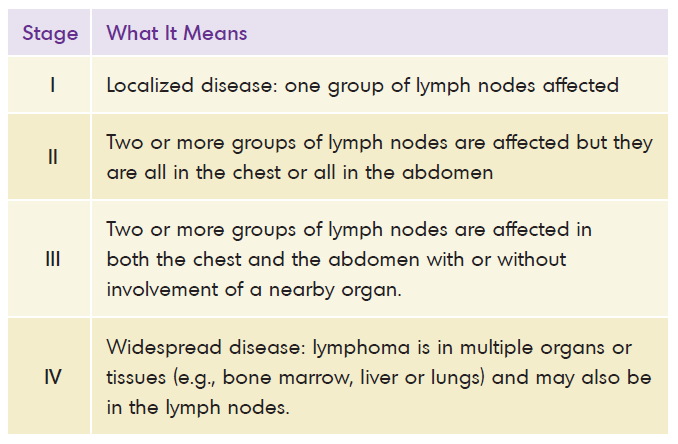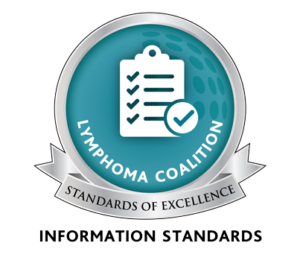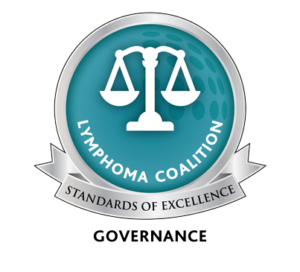Ann Arbor Staging System
The stage is determined by:
- The number and location of lymph nodes affected;
- Whether the affected lymph nodes are above, below or on both sides of the diaphragm (the large, dome-shaped muscle under the ribcage that separates the chest from the abdomen);
- Whether the disease has spread to the bone marrow or to other organs such as the liver.
There are four main stages:
- In stages I and II, the cancer is limited to one or two areas of the body (early stage).
- In stages III and IV, the cancer is more widespread (advanced stage).

Your doctor may also add a single letter to the stage.
A generally means the patient has not experienced any troublesome symptoms.
B means the patient has experienced one or more of the following symptoms:
- Unexplained weight loss of more than 10% in the six months before diagnosis
- Unexplained, intermittent fevers with temperatures above 38°C (100.4°F)
- Drenching night sweats (requiring pajamas or bed sheets to be changed).
X if patients have a tumour in the chest that is at least one-third as wide as the chest, or if tumours in other areas are at least 10 cm (4 inches) wide. This is called bulky disease. Patients with bulky disease usually need more intensive treatment than patients without bulky disease.





